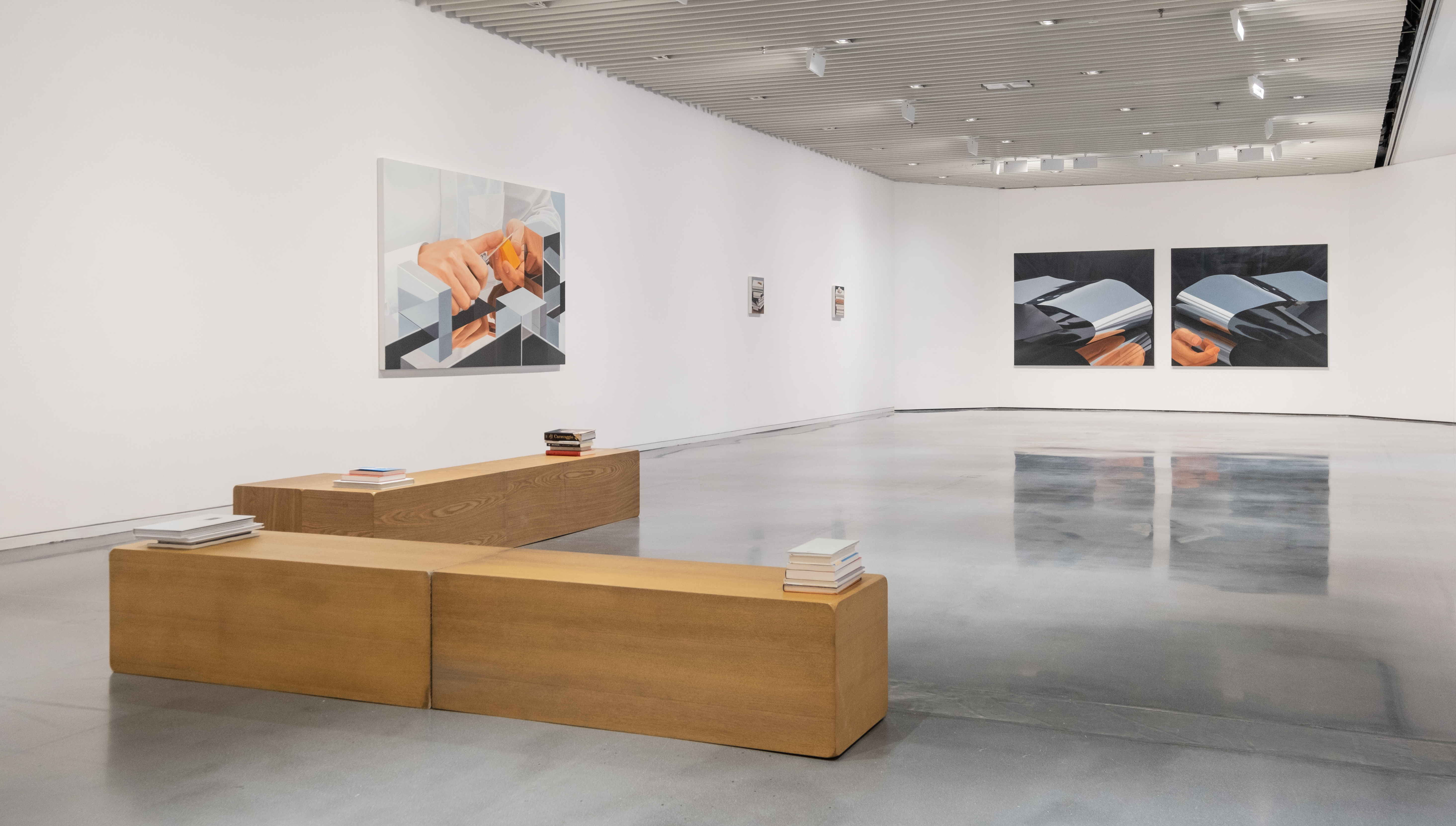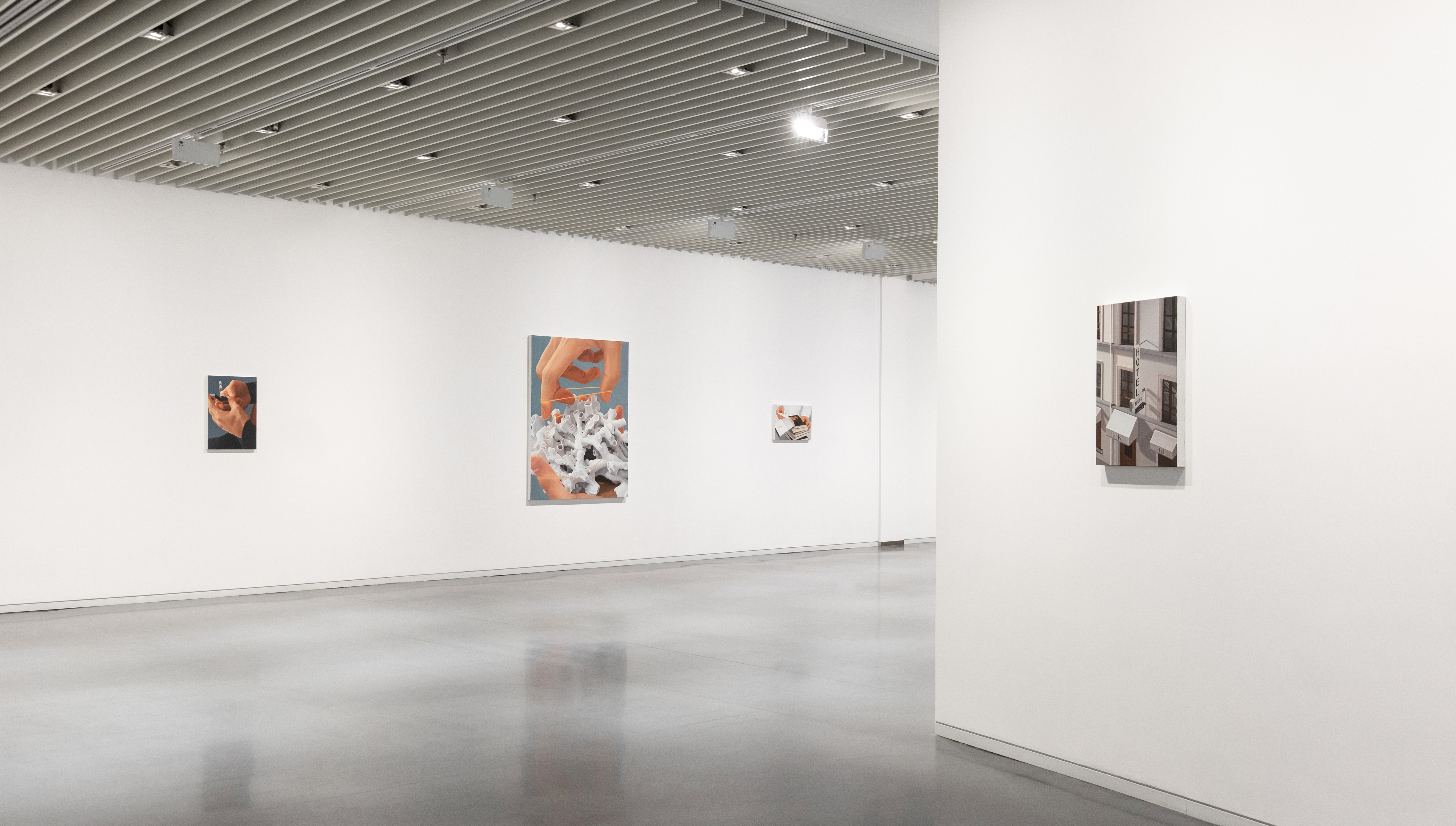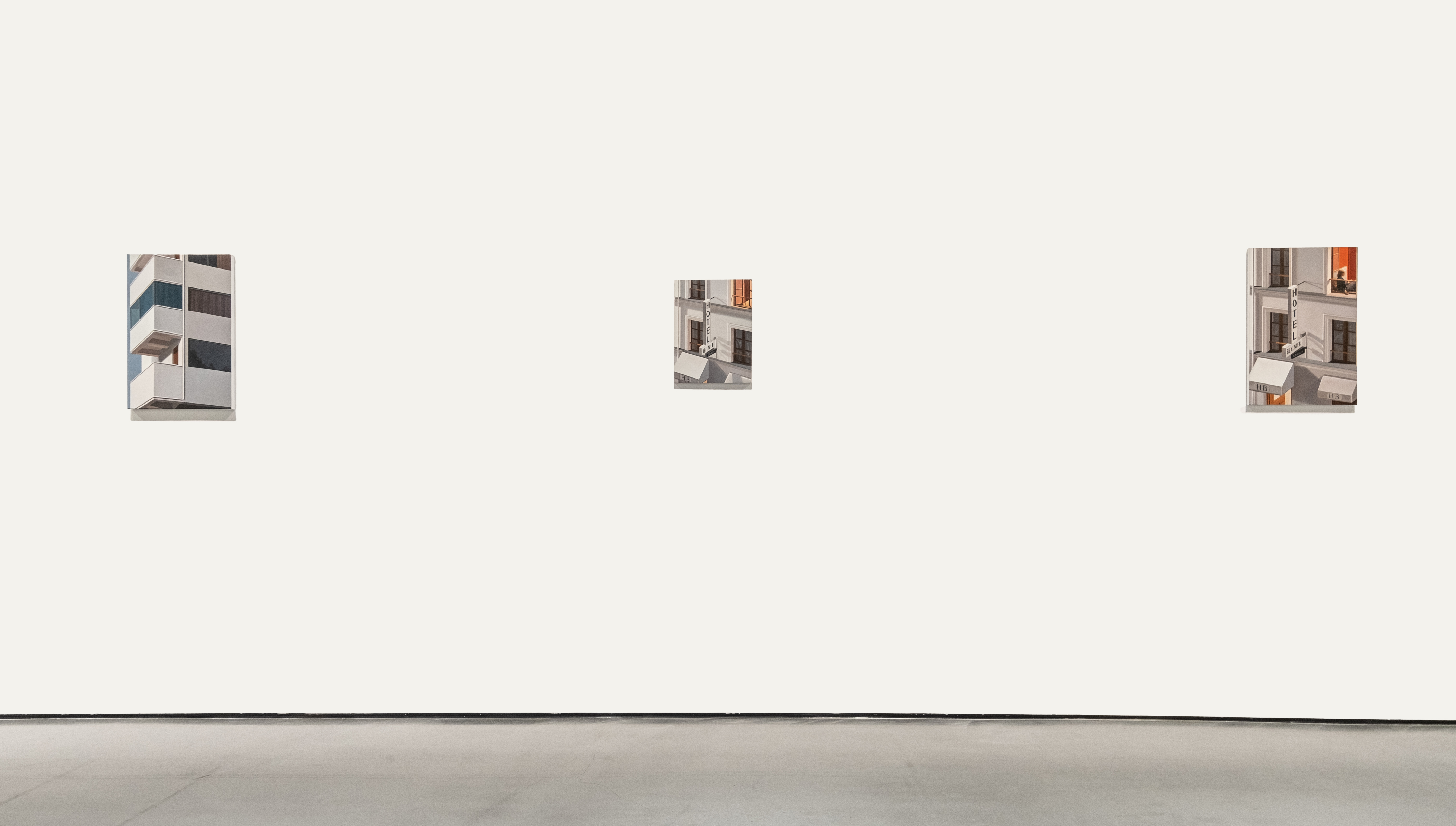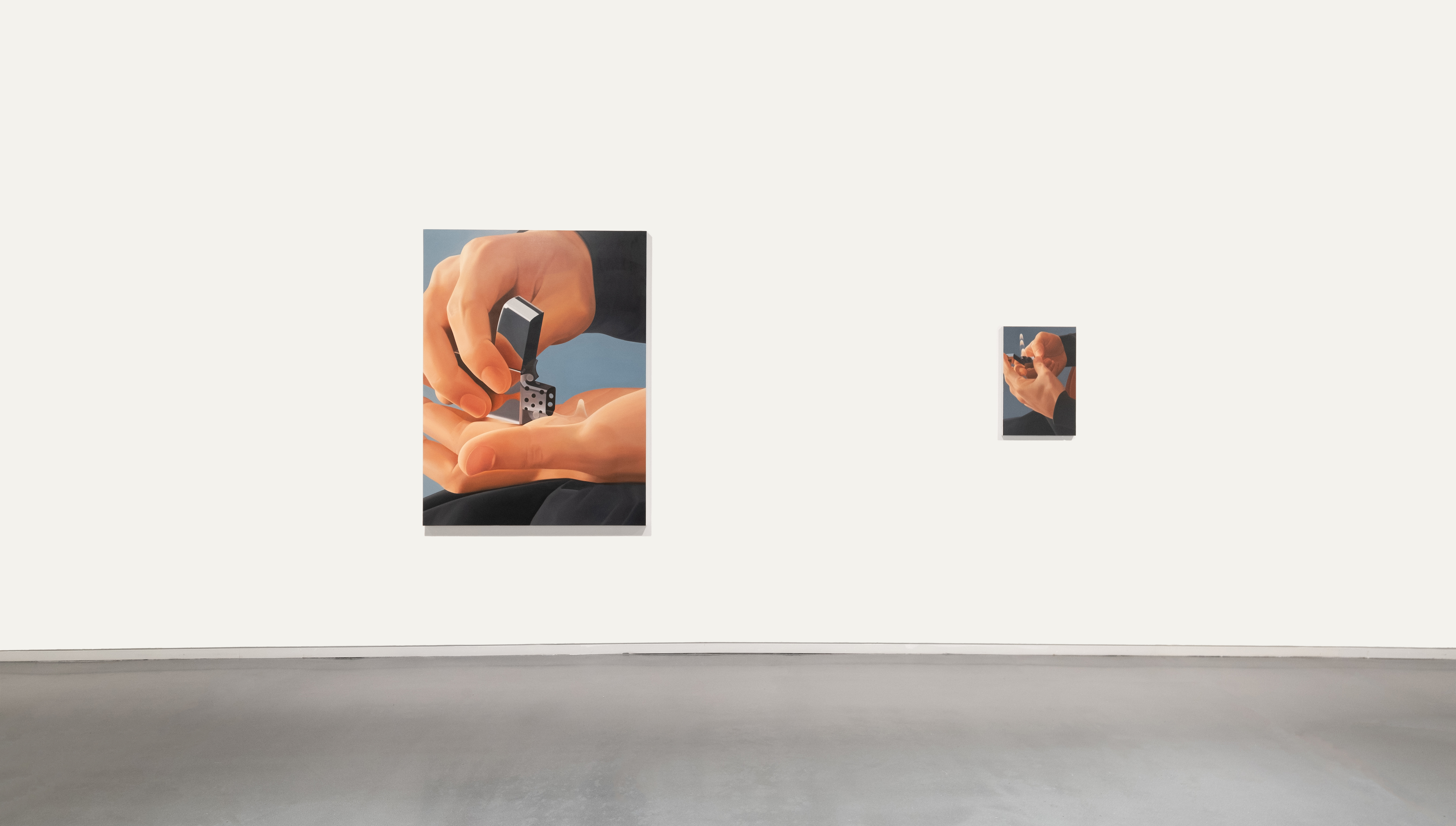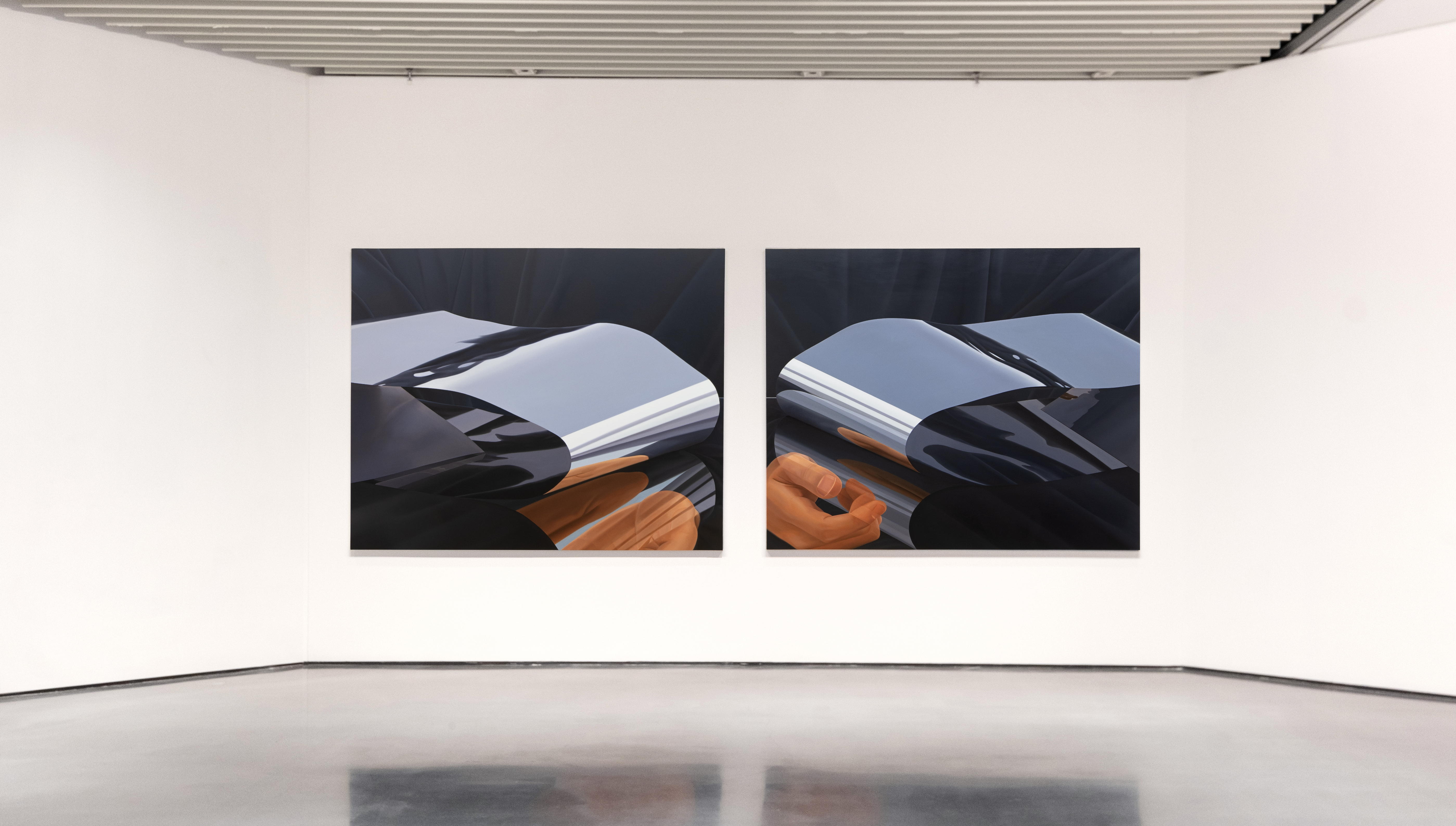Overview
Liang Hao paints in the crevices between time and time.
Events fracture from motivation, actions fracture from reality, bodies fracture from belonging. What Liang Hao's work shows us is a distracted modern subject— a subject with circulating gazes, where repetitive stares imply repetitive representation; a subject with still gesture, lacking causality, lacking purpose, occasionally filled with daytime fantasies.
Liang Hao severs the linear chain of past and future. Viewers struggle to determine the body's emotions, will, and commands through the fragmentary postures within the image. Modern individuals would be familiar with this condition, a moment of daze, abandon and awakening, inadvertently inserting into the flow of present actions, suddenly triggering the collapse of meaning and self-mockery, and thereby hinting at modernity's tricks.
The reference to Caravaggio is significant. Classical gestures are powerful. They are extensions of will and narrative. Liang Hao's gestures, on the other hand, refuse to bear such obligations. They stretch calmly, disregarding vectors and velocity, and therefore fail to reflect body’s intention. Thus, we say, the moments depicted by Liang Hao are feeble (in a narrative sense). Strong images embedded within feeble moments, then feebleness pretended to be strong.
Events fracture from motivation, actions fracture from reality, bodies fracture from belonging. What Liang Hao's work shows us is a distracted modern subject— a subject with circulating gazes, where repetitive stares imply repetitive representation; a subject with still gesture, lacking causality, lacking purpose, occasionally filled with daytime fantasies.
Liang Hao severs the linear chain of past and future. Viewers struggle to determine the body's emotions, will, and commands through the fragmentary postures within the image. Modern individuals would be familiar with this condition, a moment of daze, abandon and awakening, inadvertently inserting into the flow of present actions, suddenly triggering the collapse of meaning and self-mockery, and thereby hinting at modernity's tricks.
The reference to Caravaggio is significant. Classical gestures are powerful. They are extensions of will and narrative. Liang Hao's gestures, on the other hand, refuse to bear such obligations. They stretch calmly, disregarding vectors and velocity, and therefore fail to reflect body’s intention. Thus, we say, the moments depicted by Liang Hao are feeble (in a narrative sense). Strong images embedded within feeble moments, then feebleness pretended to be strong.

